Return to Monchy, a moment with a casket, stirs emotions as anticipation builds over return of N.L. soldier
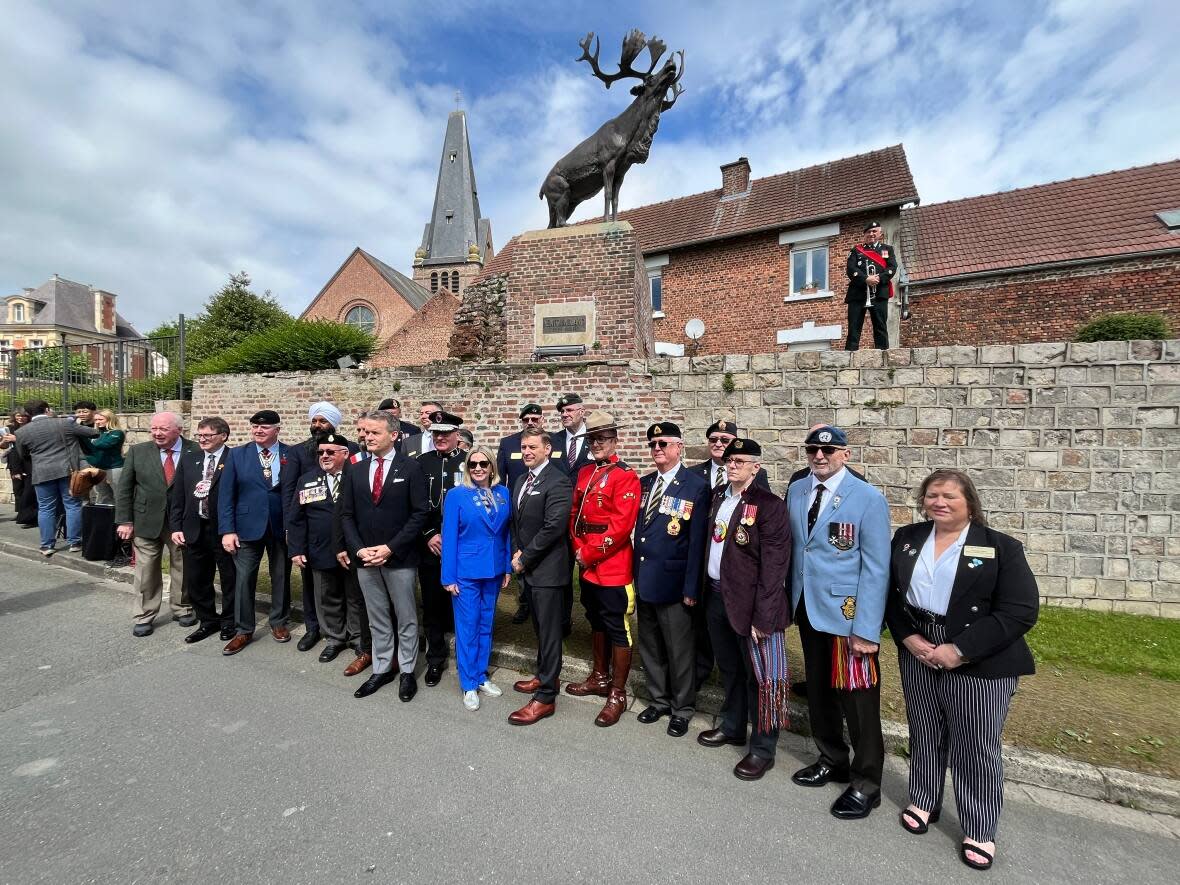
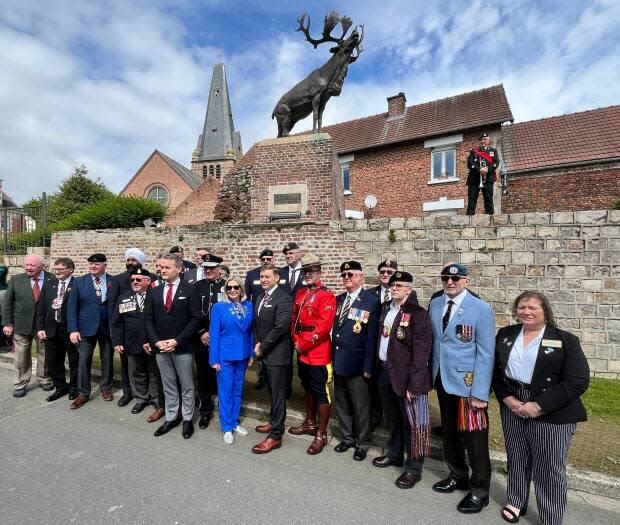
Even a stout navy veteran like Frank Sullivan was unable to maintain his composure Thursday following an unexpected chance to pay his respects to an unknown Newfoundland soldier who will soon be repatriated to his native soil.
"To actually go inside and be able to tap the coffin and say, 'you're going home, son.' I can't talk. It's too emotional," said Sullivan, his voice cracking as he spoke with reporters Thursday morning in the shadow of the Newfoundland Caribou Memorial in the small French village of Monchy-le-Preux.
Sullivan is a member of the Newfoundland and Labrador command of the Royal Canadian Legion, and is part of a small group of legionnaires who have been pushing hard for the creation of a tomb of the unknown soldier at the Newfoundland National War Memorial in St. John's.
On Wednesday, a delegation of more than 100 people from Canada and Newfoundland and Labrador arrived in northern France to begin the process of repatriating the solder's remains.
On Thursday morning, Sullivan joined others for a tour of the Commonwealth War Graves Commission operations facility and visitor centre just outside the town of Arras.
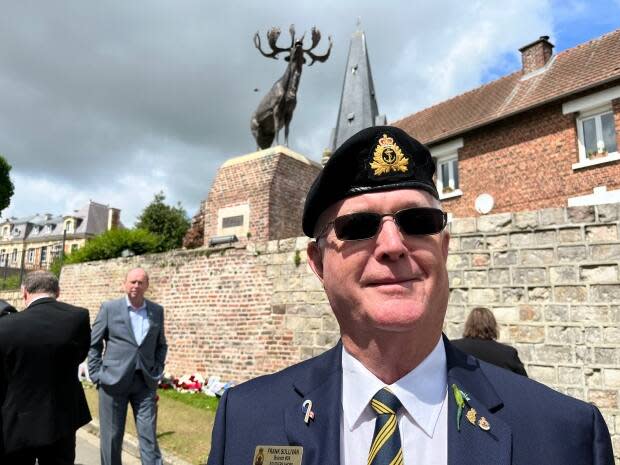
Guides explained the role of the commission as the steward over the graves of more than 1.7 million soldiers from Commonwealth countries who have died in various wars. The graves are spread over 150 countries, but nearly 600,000 of them are located in France, which was a deadly battleground for two global conflicts, including the First World War.
But Sullivan and a small group of others also had an unexpected honour. The remains of the Newfoundland soldier were exhumed on May 13, and the casket containing the remains is being held at the facility. So commission officials allowed a limited number of people to pay their respects, including Sullivan.
"You get the shivers, you get the shakes and you weep a bit. I'm sure there will a lot more weeping by me and everybody else come July 1," he said.
Premier Andrew Furey, along with his wife Allison and their son, Mark, also paid their respects to the unknown soldier.
Furey said a moment of quiet reflection with the casket was a moment he'll never forget.
"These next few days will be very sad, but I also think leads to a degree of closure for many that finally one of ours is coming home. And by extension and in our hearts, everybody who is left behind is also coming home," Furey told reporters after his visit with the unknown soldier.
WATCH | More than 100 people are on the ground in northern France to bring home the remains of an unknown Newfoundland soldier:
A transfer of remains ceremony will be held at the Beaumont-Hamel Newfoundland Memorial on Saturday morning, at which time a bearer party from the French military will deliver the casket to a bearer party consisting of modern day members of the Royal Newfoundland Regiment.
The unknown soldier and the visiting delegation will then board a plane and return to St. John's on Saturday evening. The soldier's grave marker, which features the Caribou emblem of the regiment and the words "Known Unto God" will also be returned to St. John's.
A lying-in-state will take place at Confederation Building from June 28 to June 30, allowing members of the public to visit the casket.
But the big day is July 1, which in addition to Canada Day, is also Memorial Day in Newfoundland and Labrador.
This year's annual Memorial Day ceremony will also mark the 100th anniversary of the unveiling of the National War Memorial in St. John's. The grounds of the memorial are being refurbished in advance of the anniversary. Prior to the memorial service, the unknown soldier will be interred inside a new granite burial chamber which has been created at the base of the monument.
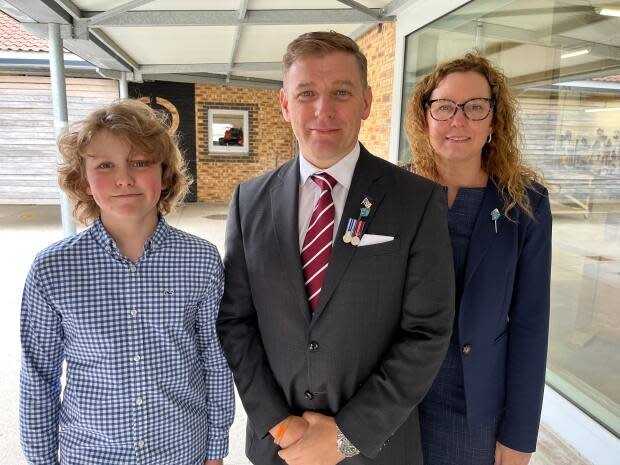
Legionnaires like Sullivan lobbied for the tomb because Newfoundland was a self-governing Dominion at the time of the First World War, and did not become a province of Canada until 1949. As a result, Sullivan and others do not feel the sacrifices of so many Newfoundlanders during the 1914-1918 war are represented by the National War Memorial in Ottawa, which has a tomb of the unknown soldier containing the remains of a Canadian soldier who died at Vimy Ridge.
Of the more than 12,000 Newfoundlanders who served on land, at sea and in the air during the war, more than 1,700 were killed and roughly 800 have no known grave.
No effort will be made to identify the soldier that's being returned to the province because the unknown soldier will represent all those who served Newfoundland and Labrador and especially those who have no known grave.
Meanwhile, Thursday's events in northern France also included a visit to the Monchy-le-Preux Newfoundland Memorial, which is located in the centre of the village of nearly 700 residents. It's one of five caribou memorials erected across northern France and Belgium and are located at sites where the Newfoundland Regiment engaged in significant battles.
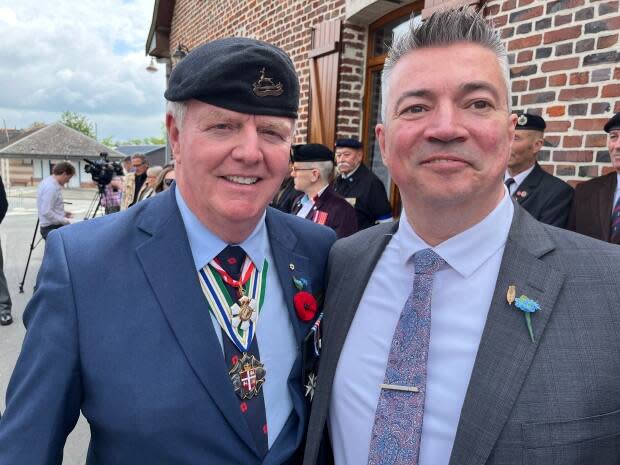
At Monchy-le-Preux, the regiment suffered heavy losses in April 1917, but nine members of the regiment, along with another soldier from a British regiment who helped fight off a German counter attack, are still remembered for their efforts to keep the village out of German hands.
The mayor of Monchy-le-Preux, Olivier Degauquier, said the sacrifices of Newfoundland soldiers have not been forgotten and the people of Monchy understand the significance of the prominent caribou statue in their village.
"Thank you very much Canada, Terre-Neuve and Labrador [that we] can live free in our town," the mayor said in fragmented English. "The liberty is possible with only 10 person. Ten Canadian, save the village."
Download our free CBC News app to sign up for push alerts for CBC Newfoundland and Labrador. Click here to visit our landing page.

 Yahoo News
Yahoo News 
